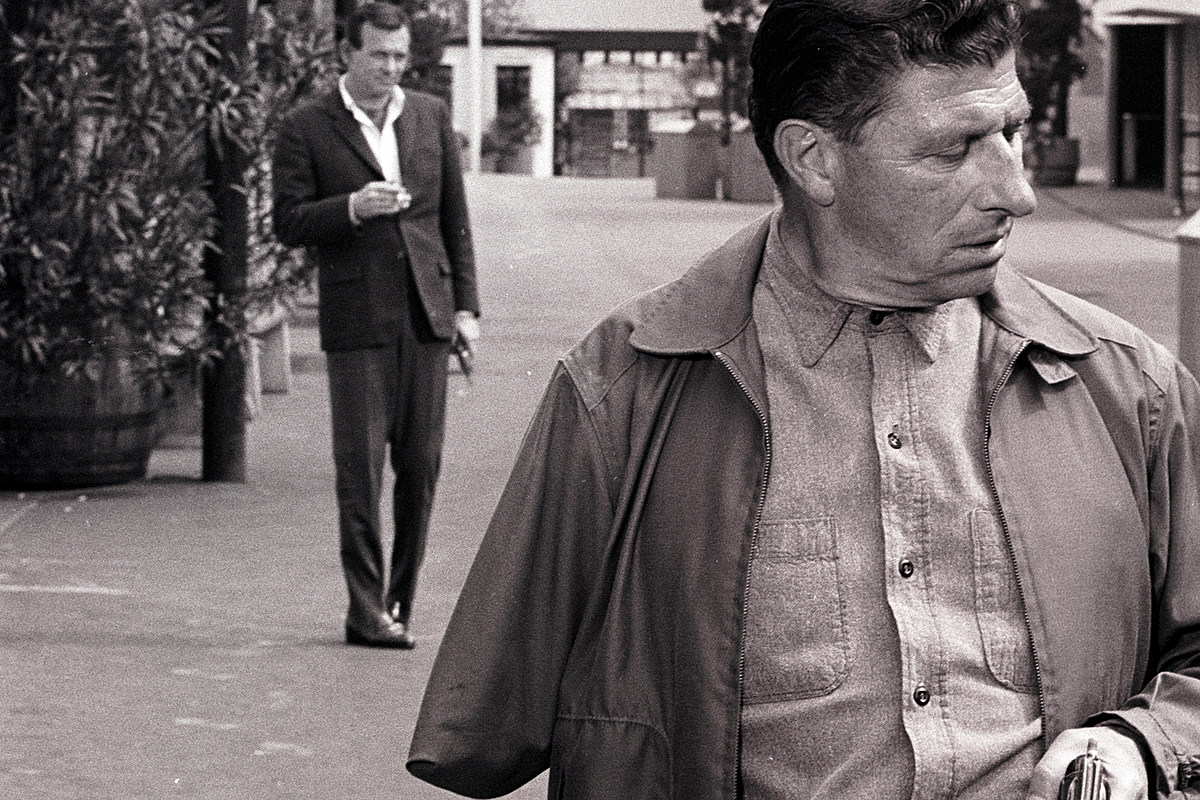Classic Rock
How ‘The Fugitive’ Proved TV Shows Could End Successfully
In television, there’s often a strange, inherent tension between the fans who watch shows and the executives who oversee them.
The former want good stories, compellingly told, that make sense and, when the time is right, come to a satisfying conclusion. The latter want to make money, which often means extending shows for as long as possible and sometimes even leaving things unresolved at the end because that lack of resolution keeps people guessing and can help the shows have a long life in syndication. Often, the executives win, but when the fans do, they have the final episode of ABC’s The Fugitive, which aired on Aug. 29, 1967, to thank for it.
Created by Roy Huggins, the show began on Sept. 17, 1963, with one of the all-time greatest television premises: A doctor named Richard Kimble (David Janssen) has been convicted for the murder of his wife, although he claims to be innocent and that she was instead killed by a “one-armed man.” But the train carrying him to be executed derails and he escapes. This allows him to clear his name by finding the One-Armed Man (Bill Raisch), but it also means that Kimble is relentlessly hunted by a police detective named Lt. Philip Gerard (Barry Morse), who wants to return him to death row.
Watch the Opening and Closing Credits of ‘The Fugitive’
Although The Fugitive was only a middling hit – it topped out at No. 5 in the Nielsen ratings in its second season and then fell out of the Top 30 for its final two seasons – it was deeply influential, spawned a hit 1993 movie adaptation starring Harrison Ford and its critical reputation has continued to rise over the years.
The show epitomizes the early ’60s in the way it joins the decade that had just ended and the one that was beginning. From the aura of ’50s America, it brings a wholesome, straightforward sense of the possibility of true justice: Even though Kimble is a vagabond, moving from one place to another and working odd jobs as he pursues the One-Armed Man, each of the 120 episodes projects the feeling that in the end, the truth will out and Kimble will be vindicated.
At the same time, the show evinces strong traces of the waves of anti-establishment sentiment and perhaps even cynicism that would sweep the nation as the late ’60s rolled over into the ’70s. Despite the conviction that justice will triumph, the show also holds more than a hint of the feeling that there may be something askew in the power structures of America. The law enforcement apparatus hunting Kimble – in the person of Lt. Gerard – often seems more interested in the arbitrary rule of law than it is in finding the truth, and the people that Kimble helps out in many of the episodes seem to be the victims of a society slowly going wrong.
It was a powerful brew, helped out by the consistently fine writing and a list of guest stars that reads like a who’s who of ’60s television actors who would go on to have huge careers. Robert Duvall, Bruce Dern, Ed Asner, Telly Savalas, Leslie Nielsen, Tom Skerritt, Charles Bronson, Angie Dickinson, Kurt Russell, Ron Howard, Diane Ladd, Warren Oates, Mickey Rooney and many others appeared, in large part attracted by the show’s strong scripts and great storylines.
Watch the Final Scene From the Final Episode of ‘The Fugitive’
And the show’s distinct setup also raised a vital question: Would Kimble catch the One-Armed Man in the end? As the show approached the end of its fourth season, with ratings falling, the answer seemed to be no.
The penultimate episode aired on April 11, 1967, and as ABC’s vice president of programming at the time, Leonard Goldberg, remembered in an interview with Vanity Fair, “I realized we were going to leave viewers empty-handed, and that was wrong.” Which is to say that the network was planning to leave the show unresolved, hoping that viewers would take this lack of conclusion as a mystery to be solved and watch the show in syndication. Goldberg explained that he fought hard to give the viewers the ending they deserved because they were so “deeply invested” in the show.
He won, but the network struck a hard bargain: The final episode – which would be split into two parts – would be allowed to air only in August, the deadest time of the TV calendar.
But despite this handicap, the finale triumphed. The first part of the episode, which aired on Aug. 22, did fine. But the second part smashed every record for TV viewership that existed at that point. Over 78 million viewers tuned into the show, which meant that 72% of people who were watching television that Tuesday night were watching The Fugitive. It was a record for regularly programmed television – beating out the Beatles‘ appearance on The Ed Sullivan Show three years before – that would stand until the “Who Shot JR.?” episode of Dallas in 1980.
Not only that, but the episode also represented a complete victory for the fans. The One-Armed Man confessed to the murder of Kimble’s wife and was shot down by law enforcement. Kimble was then released from his chase and from being chased. The show ended with Kimble and a lady friend walking down a sidewalk after a pair of cops ignored him, as the show’s narrator (William Conrad) announced that it was “Tuesday, Sept. 5: The day the running stopped.”
It was a milestone in television because it proved that creating a satisfying ending to a show could not only work narratively but financially. And in doing so, it opened the door for every other show that wanted to end by giving fans what they deserved.
28 Classic Films That Were Turned Into (Mostly Failed) TV Shows
Many classic ’70s and ’80s flicks have spawned TV series – but few have found success.

